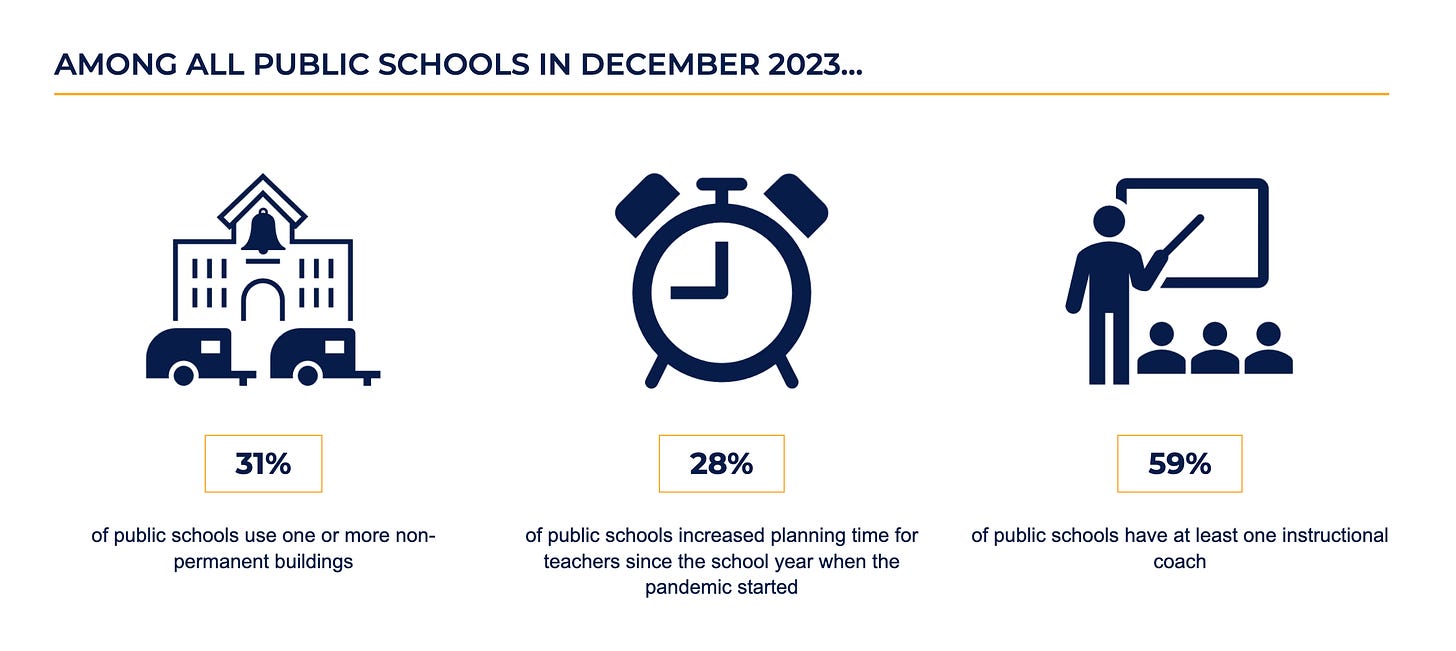Welcome back to the education policy hotlist!
Budgeting season is here, and you wonky folks are navigating local and national conversations about potential upcoming budget cuts. This spring, you can find us staying up-to-date and engaged in Oregon’s budgeting process!
First, we will join the Portland Council PTA to learn how Oregon funds its schools. The discussion will occur on February 22nd at Glencoe Elementary at 7:00 p.m. (PST). If you need a buddy to go with, let us know!
Families for Equity in Schools, a new Oregon non-profit, will help our Portland community understand and prepare for the state’s education funding reform. Join their kick-off event in April! Check it out here.
If you want to learn more about the school budgeting process overeall, follow these great organizations and resources:
Allovue’s 2023 survey on the perceptions about K-12 finance.
Edunomic’s resource library, with commentary and critique on the most urgent issues in K-12 finance. They recently wrote about the legislature’s role in ensuring K-12 financial stability.
The Alliance for Resource Equity is a partnership between the Education Trust and Education Resource Strategies. They provide tools to help states and districts give every student the right combination of resources to unlock their biggest dreams.
Let us know what education finance and budgeting areas interest you the most by leaving a comment! Now, let’s dive into the week’s hottest education policy topics.
Academic Recovery
Pay-for-performance tutoring in Texas and Florida
A pilot program in Texas and Florida offers low-income students access to high-quality tutoring at no cost. Still, the tutoring providers only get paid if the students show academic progress. The program uses standardized tests and other measures to evaluate the impact of tutoring on student outcomes and rewards the providers based on their performance. The program aims to improve tutoring services' quality and accountability and help students falling behind due to the pandemic.
The value of ROI analyses for career and college pathways
A new Excel in Ed brief argues that state policymakers should use return on investment (ROI) analyses to evaluate and improve their career and college pathways programs. ROI analyses measure the costs and benefits of different education and training investments and help students and educators make informed decisions. The report provides a framework and examples of how states can use ROI analyses to align their pathways with labor market demand, increase quality and equity, and communicate value to stakeholders.
So What? A challenge for CTE programs and pathways work is that they span from middle school to postsecondary education and beyond. This involves different departments and agencies, such as education, economic development, labor, and local education authorities. To conduct a high-quality ROI analysis, they need to collaborate and exchange the data they have.
College and Career Readiness
Akron Public Schools uses LEAPs to promote personalized and equitable learning.
Akron Public Schools, a large urban district in Ohio, has adopted a new approach to learning called LEAPs (Learner Experience and Academic Pathways), allowing students to choose from various learning options based on their interests, goals, and needs. The LEAPs include online courses, internships, dual enrollment, project-based learning, and more. The LEAPs aim to provide students with more agency, voice, and choice in their education and to foster a culture of innovation and equity in the district.
School counselors play a crucial role in helping students access financial aid
A new piece in Brookings Institution highlights the importance of school counselors in guiding students through the complex process of applying for federal financial aid. The report finds that students who receive more counseling are more likely to complete the Free Application for Federal Student Aid (FAFSA), which is the key to unlocking grants, loans, and scholarships. The report also recommends increasing the number and quality of school counselors, especially in low-income and rural schools, where students face more barriers to higher education.
So what? The authors also note that the implementation of a new Free Application for Federal Student Aid (FAFSA) this spring has been plagued by technical issues. So, states and colleges should be flexible with financial aid and college enrollment deadlines so the FAFSA delay does not disproportionately impact low-income students.
Student Engagement and Well-Being
California updates teaching standards with more emphasis on family and SEL.
The California Commission on Teacher Credentialing has approved new standards for teacher preparation programs that require more focus on family engagement and social-emotional learning. The new standards, which will take effect in 2026, also include more attention to equity, diversity, inclusion, and anti-bias practices. The new standards aim to better prepare teachers for the changing needs and expectations of students and families in the 21st century.
So what? The standards also include two new sections: one that requires teachers to explore how their beliefs and prejudices affect student learning and one that prompts teachers to consider their ethical principles.
Teacher Workforce
The prevalence and impact of teacher self-censorship
New survey data from RAND reveals that two-thirds of teachers censor themselves on controversial topics, even when school policies or laws do not require them. Based on a survey of over 1,000 teachers, the study finds that teachers are more likely to self-censor if they perceive a lack of support from their administrators, colleagues, or parents or work in politically homogeneous or polarized communities. The study warns that teacher self-censorship can undermine the quality of instruction, the diversity of perspectives, and students' civic education.
School Leaders
Alabama’s plan to offer stipends for school administrators
Alabama is working on a plan to offer $15,000 stipends for certain school administrators who work in low-performing or high-poverty schools. The plan, part of the state’s federal stimulus spending, aims to attract and retain influential leaders who can improve student outcomes and school culture. The plan also includes professional development and mentoring for eligible administrators, who must commit to working in their schools for at least three years.
Early Literacy
How states can implement and sustain strong reading instruction
The National Council on Teacher Quality (NCTQ) has published a State Reading Policy Action Guide outlining five key actions states can take to improve student reading outcomes by strengthening teacher preparation and support. The guide provides examples of states that have successfully adopted these policy actions, such as setting specific reading standards for teacher prep programs, reviewing programs to ensure they teach the science of reading, adopting a robust elementary reading licensure test, requiring districts to use high-quality reading curriculum, and providing professional learning and ongoing support for teachers. The guide is a valuable resource for education policymakers who want to ensure that every teacher is well-equipped to teach reading effectively and every student can read proficiently.
Education Funding
Minnesota’s school funding dilemma
A new law in Minnesota provides $2 billion in new school funding over the next four years, but it also changes how the state distributes the money to districts. Some districts, especially those with declining enrollment or high property values, will receive less funding than before, while others will see an increase. This means that some districts will have to make budget cuts, raise taxes, or seek voter approval for levies, while others will have more resources to invest in education. The new law addresses the funding disparities and achievement gaps among districts but also creates winners and losers.
Latest Pulse Panel Data
The National Center on Education Statistics released their latest Pulse Panel survey data collected in December 2023. The data include information about infrastructure, planning time, instructional coaches, and other variables.
Dr. Christine Pitts is an executive leader advancing evidence-based public policy for social impact. Follow her on LinkedIn and Instagram for more updates.










